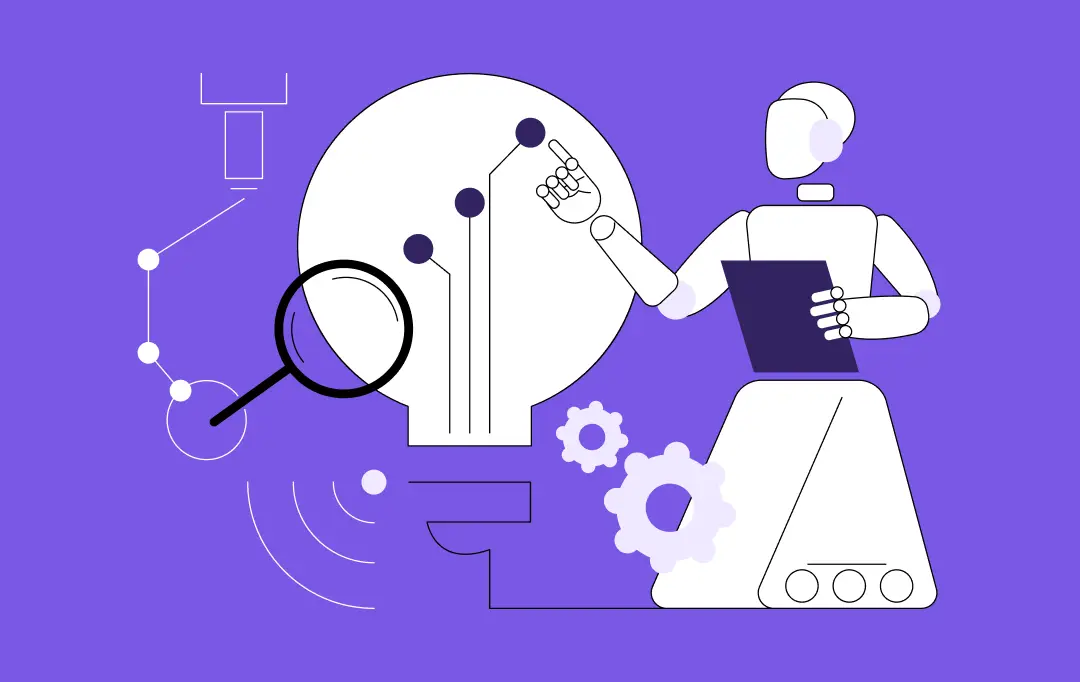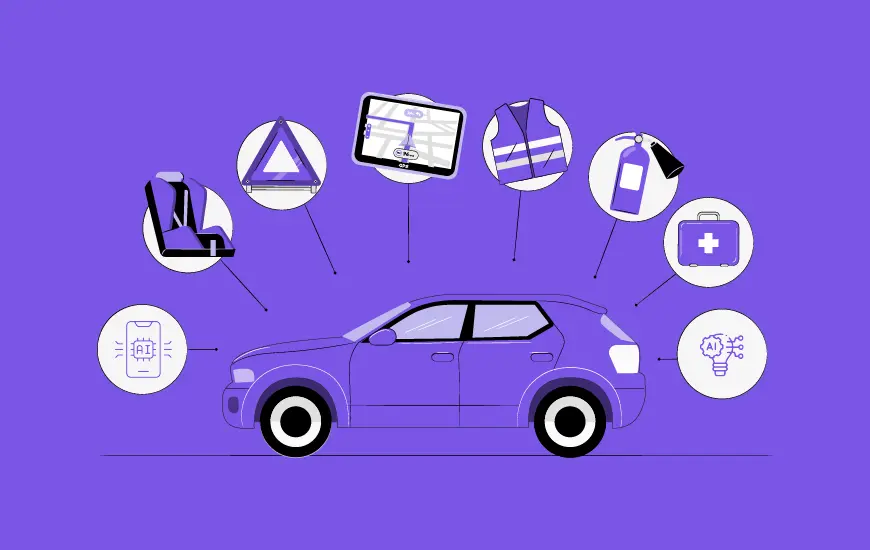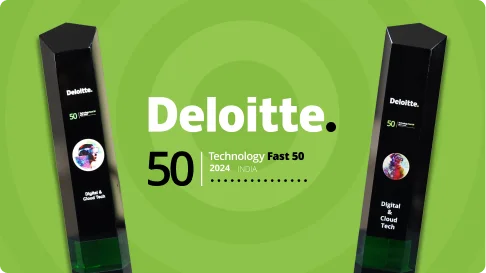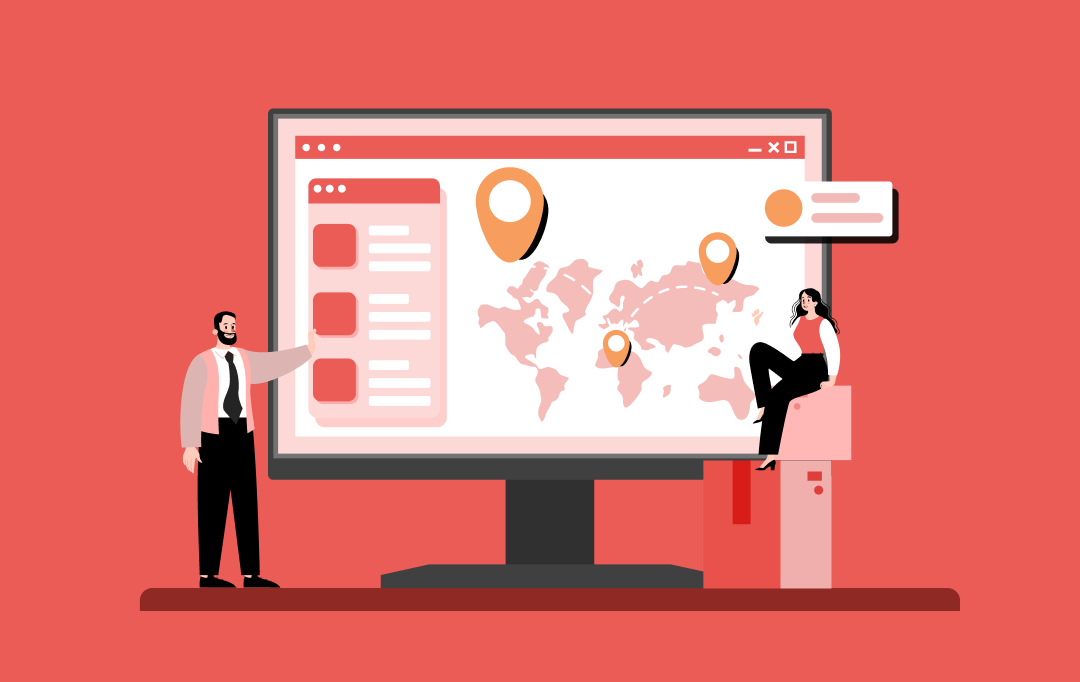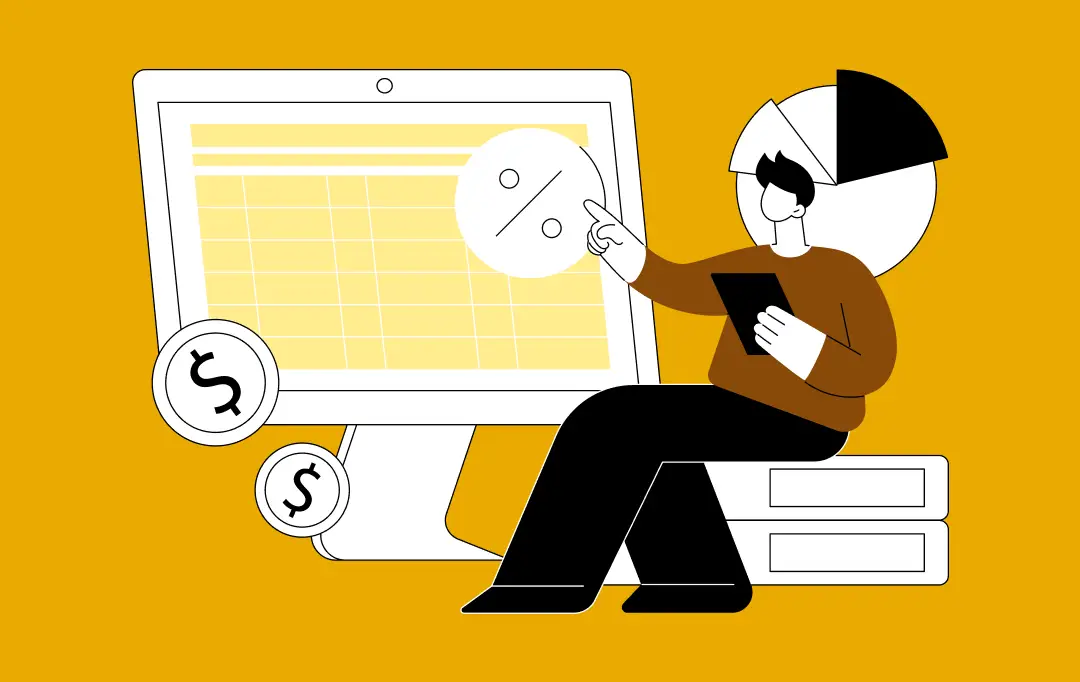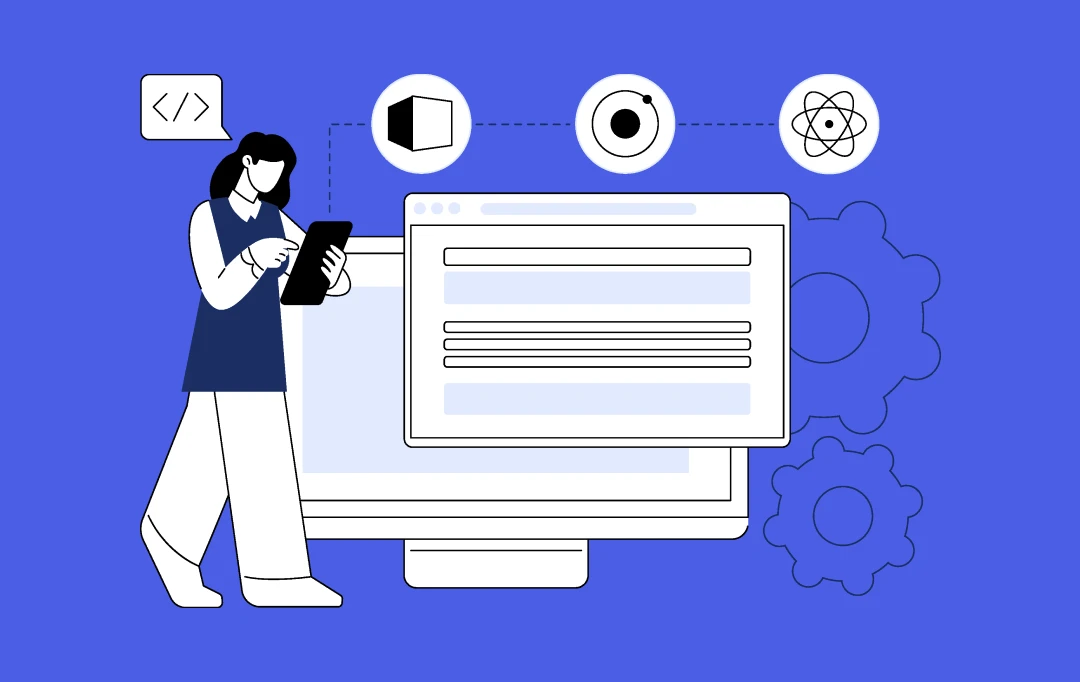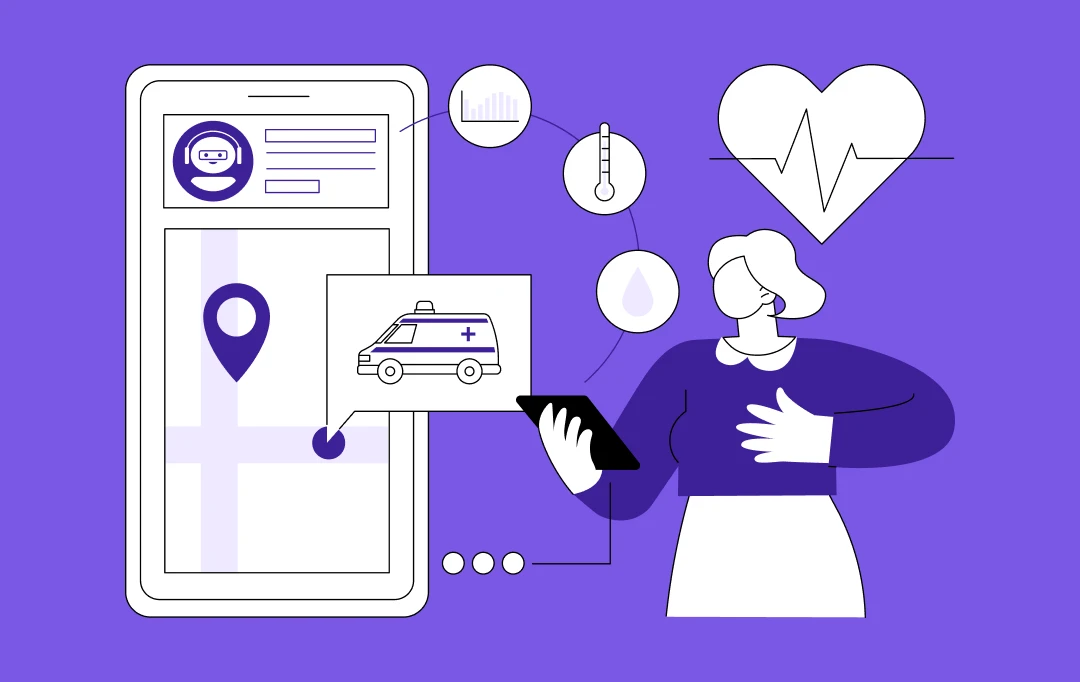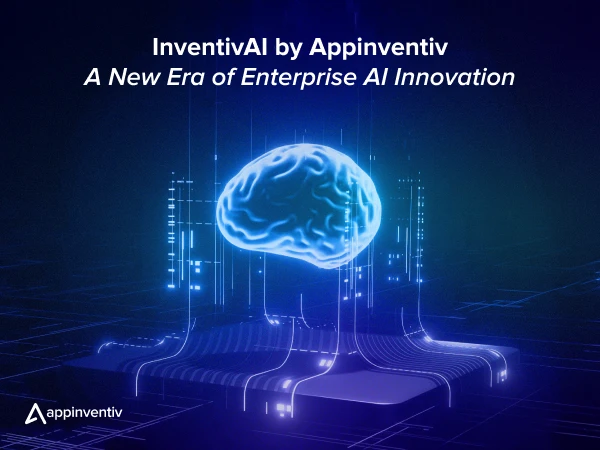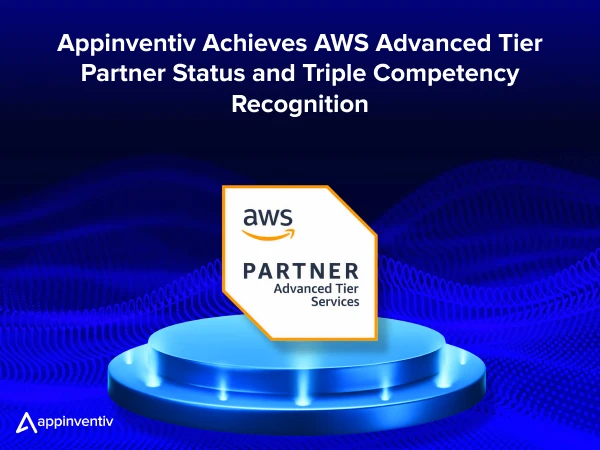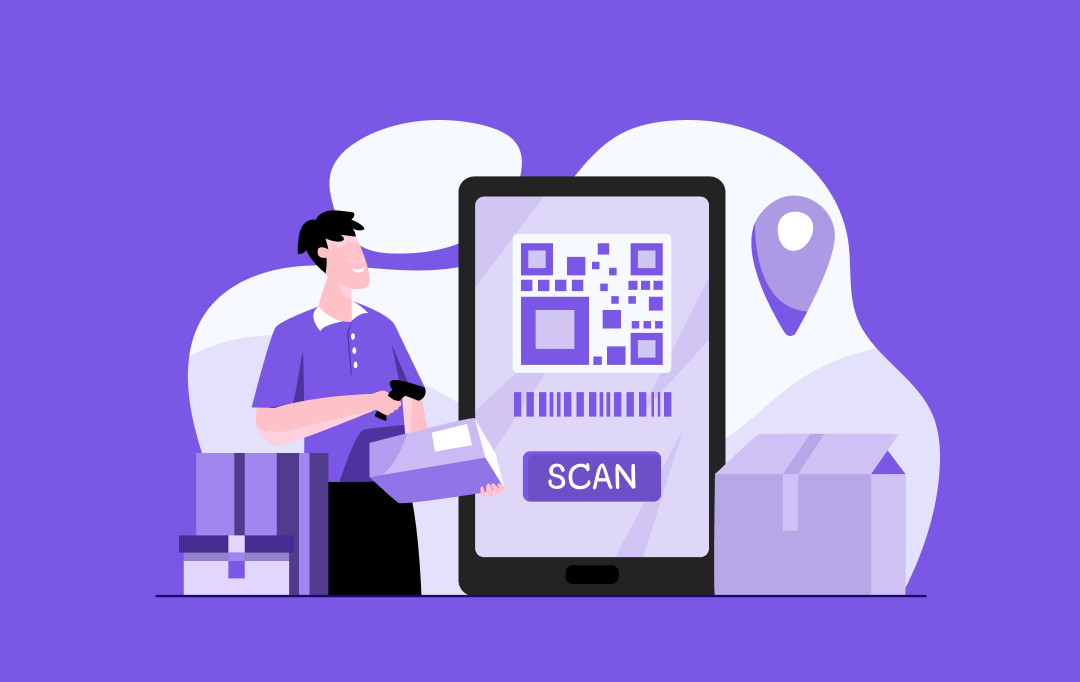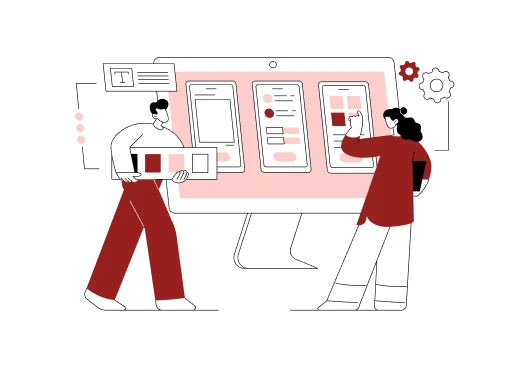- Why the Middle East Is Accelerating Its Smart Grid Transition
- The Compliance And Security Layer You Must Navigate Before Scaling Any Smart Grid Program
- From Traditional to Intelligent: What the Modern Middle Eastern Grid Now Demands
- What This New Grid Really Looks Like
- Why This Model Has Become Essential
- Core Components of a Modern IoT-Driven Smart Grid
- Communication & Connectivity Layer
- Edge Intelligence & Local Automation
- Central Data Management & Control
- Cybersecurity & Access Governance
- Integration with Distributed Energy & Renewables
- User-Facing Applications & Mobile Systems
- Real-World Use Cases of IoT-Enabled Smart Grids in the Middle East
- Automated Fault Detection and Self-Healing Networks
- Advanced Metering and Real-Time Energy Visibility
- Demand Response and Peak-Load Optimization
- Renewable Integration and Distributed Energy Coordination
- Predictive Maintenance for Critical Grid Assets
- Water–Energy Coordination in Integrated Utilities
- Smart Consumer Engagement Through Digital Energy Platforms
- Benefits of Integrating IoT in Smart Grids in Middle East
- Lower Technical Losses and Better Network Efficiency
- Faster Response and Higher Reliability
- Smoother Integration of Solar and Other Renewables
- Stronger Demand-Side Management
- Healthier Assets and Lower Maintenance Costs
- More Control and Better Planning
- Improved Customer Experience
- A More Flexible, Future-Ready Grid
- How to Integrate IoT into Modern Smart Grids
- Build a Unified Data Foundation
- Connect Field Devices Using Multi-Layer Networks
- Add Edge Processing for Faster Local Decisions
- Integrate IoT with Existing SCADA, AMI, and Enterprise Systems
- Secure Every Layer of the Connected Grid
- Enable Renewable and Distributed Resource Coordination
- Challenges Slowing Down Smart Grid Adoption in the Middle East
- The Future of Smart Grids with IoT in the Middle East
- AI-Enabled Forecasting and Automated Decisions
- Stronger Renewable Coordination and Distributed Energy Balance
- Expansion of Grid-Edge Intelligence
- Growth of Customer-Side Digital Platforms
- Closer Integration Between Water, Power, and Urban Systems
- Edge AI for Grid Resilience
- How Appinventiv Helps Middle Eastern Utilities Build IoT-Driven Smart Grids
- FAQs
- IoT is becoming the only practical way for Middle Eastern grids to handle rising demand, renewables, and reliability pressure.
- Modernization is moving fast because utilities can’t rely on traditional grid models anymore.
- The region’s harsh environment makes rugged IoT design and multi-layer communication essential, not optional.
- Compliance frameworks in the UAE and Saudi Arabia shape every smart grid decision more than the technology itself.
- Edge AI will decide which utilities achieve real-time stability as renewable capacity grows.
- Successful IoT smart grid integration depends on phased rollout, strong cybersecurity, and smooth interoperability with legacy OT/IT systems.
If you are running a utility or overseeing national infrastructure in the Middle East, your reality is not theoretical. You are balancing growing demand, legacy assets, outage pressure, cyber risk, and public expectations of “always on” service. At the same time, regulators are pushing for more renewables and more transparency, while your teams are still wrestling with fragmented SCADA, manual reporting, and limited visibility beyond the substation.
In boardroom conversations, the promise of smart grids sounds simple. Better data. Better decisions. Fewer losses. In practice, you know it is harder. Every new asset adds another protocol. Every new meter rollout has political and operational risk. Every cloud discussion raises questions about sovereignty, latency, and security. The gap between vision decks and what your grid can actually see and act on in real time still feels wide.
This is where IoT in smart grids in the Middle East is shifting from “innovation topic” to operational necessity. Connected meters, field sensors, and edge devices, when tied into a unified platform, are giving utilities live visibility into the network, helping them cut technical losses, integrate solar at scale, and respond to faults in minutes instead of hours. Smart grids Middle East projects are no longer pilot experiments. They are becoming the backbone of how the next decade of energy reliability and growth will be delivered.
In this blog, we will walk through how IoT integration in the smart grids across the Middle East is evolving, what the architecture of a modern IoT smart grid integration actually looks like, and how utilities are using IoT energy management to reduce losses, integrate renewables, and improve customer experience.
We will also look at the benefits of IoT in the Middle East energy sector from a business and operational lens, share real-life applications of smart energy grid using IoT across the region, and outline how an enterprise-grade technology partner like Appinventiv can support your smart grid roadmap end to end.
Why the Middle East Is Accelerating Its Smart Grid Transition
Across the region, utilities are reaching a point where traditional grid models can’t keep pace with rising demand, expanding cities, and growing renewable commitments. This is why IoT in smart grids in Middle East markets is no longer a concept for future planning – it has become a core pillar of national infrastructure strategies.
You can see the shift in how aggressively countries are modernizing their networks. DEWA’s $1.9B smart grid program, Saudi Arabia’s rollout of 10+ million smart meters, and Qatar’s IoT-driven smart city initiatives are building one of the most connected grid environments globally. These investments are backed by a rapidly expanding market. The regional grid modernization value – $865M in 2024 – is projected to grow past $2.6B by 2032, driven by digital metering, automation, and large-scale IoT smart grid integration.
This momentum is strengthened by the rise of renewables. As more solar and wind assets feed into the network, utilities are turning to renewable energy IoT solutions to stabilize supply, forecast generation, and manage distributed resources in real time. The region’s push toward Smart energy systems Middle East programs shows a clear move toward unified, data-led grid operations.
All signs point in the same direction. The foundations are being laid, the investments are committed, and the operational pressure is increasing. For utilities and energy enterprises planning their next decade of transformation, this is the moment to build the IoT-driven smart grid capabilities that will set them ahead of the regional curve.
While the numbers and programs show clear momentum, every serious smart grid initiative in the region still has to move within a tight regulatory and cybersecurity frame. For a CEO or CTO, the question is no longer just “What can IoT-powered smart grids can do for us?” but also “What are we allowed to deploy, how must we secure it, and which frameworks will we be measured against?”
[Also Read: How IoT is Transforming Industries – Benefits, Use Cases & Examples]
The Compliance And Security Layer You Must Navigate Before Scaling Any Smart Grid Program
As smart grid programs accelerate, the biggest shift utilities are facing isn’t only technical. It is the growing regulatory and cybersecurity pressure that now sits behind every IoT deployment, every smart meter rollout, and every grid-edge upgrade. This matters because IoT in smart grids in Middle East is no longer a pilot activity. It is becoming national infrastructure, and infrastructure operates under strict rules.
This is why utility leaders planning advanced metering, automation, or energy management programs need a clear view of the compliance landscape early – not at the end of design. Regulations in the UAE, Saudi Arabia, Qatar, and other GCC markets directly influence how devices connect, where operational data stays, what cybersecurity controls are mandatory, and how SCADA and AMI systems must interoperate with new IoT layers. If these requirements aren’t built into the architecture from day one, projects slow down, approvals stall, and redesign costs rise fast.
For smart grid teams, this becomes a practical question: Can our IoT smart grid integration actually go live at scale under the rules we operate in?
To answer that confidently, utilities increasingly align their roadmaps with:
- National grid-modernisation regulations that set reliability and outage benchmarks
- Cybersecurity frameworks for OT and IT environments in critical infrastructure
- Telecom and IoT connectivity rules governing device identity and secure communication
- Data residency and governance expectations for meter, customer, and operational data
- Smart metering and consumer-data protection standards
- Requirements emerging around cross-border grid links and regional energy trading
Bringing compliance into planning early is what allows large-scale smart grid programs to move smoothly from concept to live deployment – without hitting regulatory friction just when momentum should be highest.
From Traditional to Intelligent: What the Modern Middle Eastern Grid Now Demands
Utilities across the Middle East are outgrowing the old grid model. One-way power flow, limited visibility, and reactive maintenance no longer match rising demand, expanding cities, or the region’s renewable commitments. The shift toward Smart grids Middle East programs is happening because the system now behaves more like a highly dynamic network than a predictable, centralized grid.
IoT smart grid integration is becoming the foundation of this new model. Instead of scattered, siloed assets, utilities are connecting meters, substations, sensors, and distributed resources into a single digital ecosystem that can monitor, respond, and optimize in real time.
What This New Grid Really Looks Like
A modern IoT-based smart energy management system typically includes:
- Real-time sensing: Smart meters, feeder sensors, and transformer monitors providing live operational data.
- Secure communication: Cellular, RF mesh, and fiber networks enabling two-way exchange at scale.
- Edge intelligence: Local analytics to detect faults, optimize voltage, and automate actions instantly.
- Central control & automation: A unified data platform orchestrating load forecasting, switching, and network-wide decisions.
These components allow Smart grid IoT applications such as automated outage restoration, peak-load response, predictive maintenance, and energy balancing across distributed resources.
Why This Model Has Become Essential
The region is adding renewables at record speed. This makes the role of IoT in smart grids technology critical for:
- stabilizing variable solar output
- managing bidirectional energy flow
- coordinating distributed generation
- maintaining reliability during high-demand periods
Utilities are also using IoT-enabled energy efficiency solutions to reduce losses, detect abnormalities faster, and improve overall asset performance.
Core Components of a Modern IoT-Driven Smart Grid
As Middle Eastern utilities move toward connected, data-driven operations, the smart grid is no longer seen as a collection of upgrades. It functions as a single, coordinated system. Each layer plays a clear role in how IoT-powered smart grid setups deliver reliability, speed, and visibility. This section breaks down the core building blocks utilities now rely on to run smarter, safer, and more efficient networks.
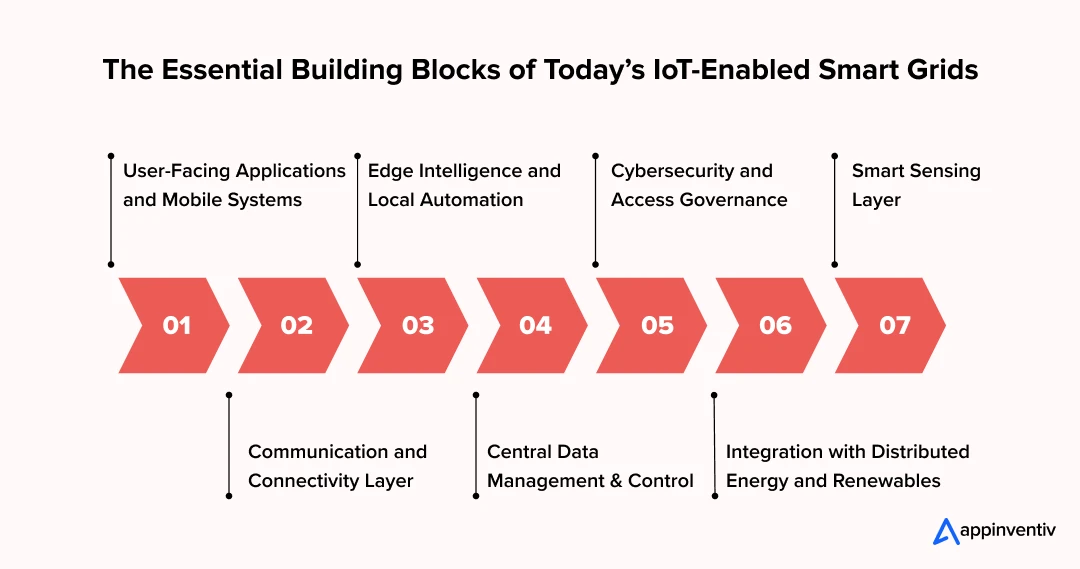 Smart Sensing Layer
Smart Sensing Layer
The grid starts with real-time visibility.
Smart meters, feeder sensors, transformer monitors, and field IoT devices capture everything from load patterns to voltage fluctuations. This sensing layer powers many Smart grid IoT applications by giving utilities accurate, live operating data instead of relying on estimates or delayed reports.
Communication & Connectivity Layer
No smart grid works without strong communication.
Across the region, utilities are using cellular (NB-IoT, LTE-M), RF mesh, fiber, and secured IP networks to move data between field devices and control centers. This layer ensures smart grid integration with IoT works smoothly across both dense urban areas and remote industrial zones.
[Also Read: Demystifying IIoT – 10 Applications and Use Cases across Industries]
Edge Intelligence & Local Automation
To reduce response times, part of the processing now happens at the edge.
Local controllers and edge devices analyze incoming data in milliseconds, isolate faults, optimize voltage, and trigger automated switching. This approach supports smart energy systems in the Middle East where distributed assets need fast, localized decisions to keep the grid stable.
Central Data Management & Control
All operational intelligence comes together here.
Utilities use central platforms to manage forecasting, load balancing, outage coordination, and network-wide performance. This is where IoT energy management becomes actionable – giving teams a single view of the entire grid with the ability to act on insights instantly.
Cybersecurity & Access Governance
With millions of connected devices, security becomes a core component, not an add-on.
Encryption, device identity management, monitoring systems, and role-based access help secure every layer. For utilities, protecting these IoT-enabled grids is essential for maintaining service continuity and meeting national security standards.
Integration with Distributed Energy & Renewables
As solar and wind capacity grows, utilities need tight coordination between traditional assets and distributed generation.
This is where the role of IoT in renewable energy management becomes critical – helping operators forecast output, stabilize variability, and manage two-way power flows.
[Also Read: The Complete Business Guide to Renewable Energy Software Development: From Strategy to Implementation]
User-Facing Applications & Mobile Systems
For customers and facility operators, engagement happens through apps and dashboards.
Utilities across the region are deploying IoT-based energy efficiency app solutions that offer real-time usage insights, alerts, and control features. These tools complete the loop by turning grid intelligence into direct customer value.
How These Layers Operate as One System
When these components work together, the smart grid behaves like a coordinated, intelligence-driven network rather than a collection of isolated assets. This is exactly how smart grids Middle East projects are improving reliability and reducing operational friction across utilities.
- Real-time awareness:
Continuous data from meters, feeders, and transformers gives operators live visibility instead of relying on delayed manual reporting. This unified view powers many Real-life applications of smart energy grid using IoT, from rapid diagnostics to faster field response. - Faster outage handling:
With edge automation and instant fault detection, circuits are isolated within seconds and unaffected areas get restored immediately. This is one of the most visible benefits of IoT in Middle East energy sector modernization, especially for high-density urban zones. - Smarter load and asset management:
Energy management becomes operational when sensing, connectivity, and control systems work in sync. Utilities can forecast demand more accurately, balance feeders during peak periods, and plan maintenance based on actual asset conditions. - Renewable coordination made practical:
As solar and wind expand, the role of IoT in energy management helps operators stabilize output, predict variability, and manage two-way flows from distributed generation. This coordination is essential for meeting regional clean energy targets. - Efficiency gains at scale:
IoT-enabled energy efficiency solutions across buildings, industries, and consumer applications help reduce waste, detect abnormalities earlier, and improve network-wide performance. When integrated with central platforms, these insights convert directly into operational savings.
This combined approach is what makes an IoT-based smart energy management system valuable – not the devices themselves, but how seamlessly they communicate, automate, and drive decisions across the entire grid.
Real-World Use Cases of IoT-Enabled Smart Grids in the Middle East
Across the region, utilities have already started using connected systems in very practical ways. These use cases capture where IoT in smart grids in Middle East projects is actually helping on the ground, not just in strategy documents.
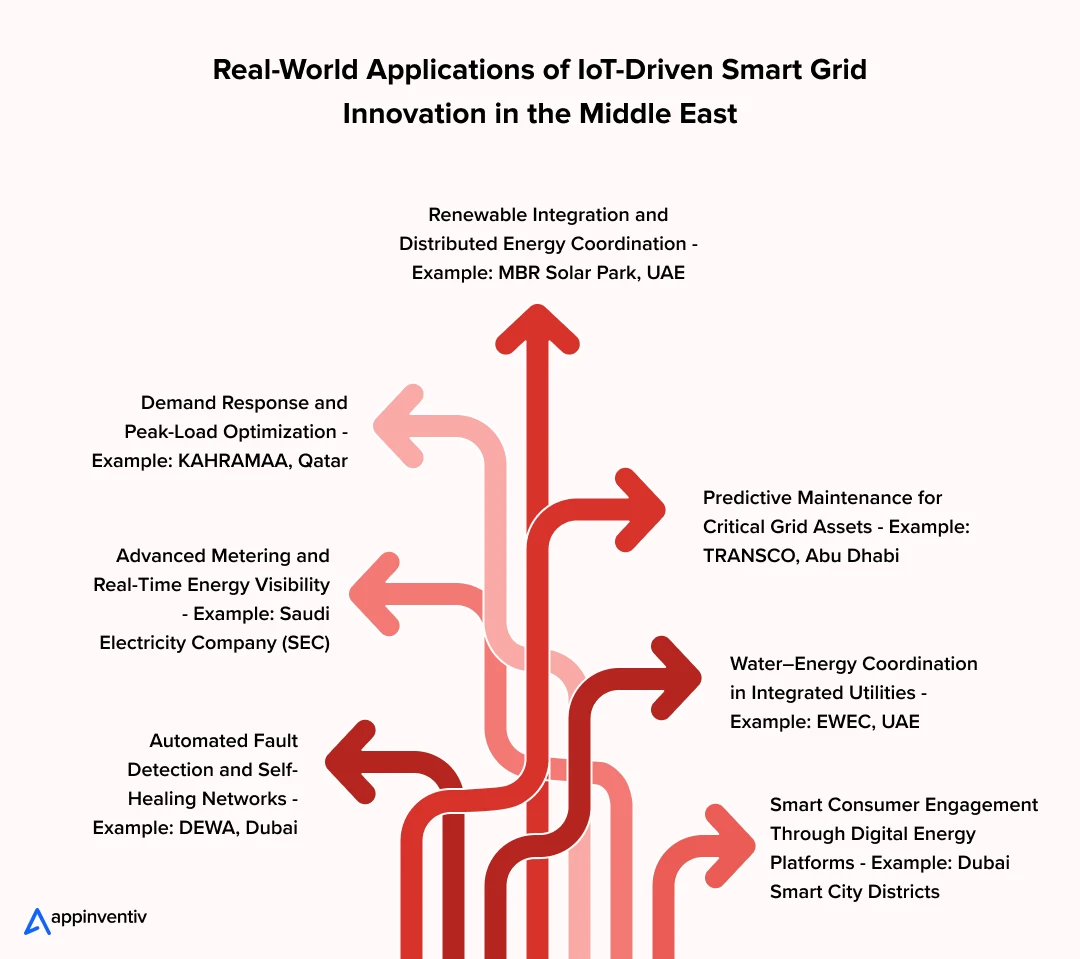
Automated Fault Detection and Self-Healing Networks
Utilities no longer have to wait for a crew to drive out and confirm a fault. With sensors on feeders and automated switching in place, the system spots the issue, isolates it and restores supply to the rest of the line on its own. It cuts downtime and keeps complaints low.
Real-world example:
In Dubai, DEWA runs an automated restoration setup that reacts within seconds. The system reads fault data from the field and redirects power almost immediately. It’s one of the clearest signs that smart grid integration with IoT technology is already paying off in day-to-day operations.
Advanced Metering and Real-Time Energy Visibility
Smart meters are giving utilities a much clearer view of how energy is being used across cities. Operators can see loads rising, falling or behaving unusually without relying on delayed readings. It makes planning and forecasting far more accurate than before.
Real-world example:
Saudi Electricity Company’s rollout of more than ten million smart meters changed the way the utility reads and manages consumption. The data streams in continuously, which means fewer surprises and fewer errors.
Demand Response and Peak-Load Optimization
Peak hours are always the toughest to manage. Connected devices now make it possible to trim or shift certain loads for short intervals without disrupting customers. It’s a simple idea, but it goes a long way in preventing overloads.
Real-world example:
KAHRAMAA uses IoT-based controls in large commercial areas across Qatar. During high-demand windows, the system adjusts lighting and cooling levels slightly, easing the pressure on the grid without affecting daily operations.
Renewable Integration and Distributed Energy Coordination
Solar output changes throughout the day, and the grid needs to react quickly. IoT sensors and forecasting tools help operators understand exactly what the renewable side is doing and keep everything running smoothly as more distributed resources come online.
Real-world example:
At the Mohammed bin Rashid Al Maktoum Solar Park, teams depend on IoT-driven monitoring to track panel performance. The data helps them predict generation and maintain stability, especially during sudden weather shifts.
Predictive Maintenance for Critical Grid Assets
Transformers and substations rarely fail without warning. The warning signs are usually there – just not visible without sensors. IoT devices track temperature, vibration and load variations, giving utilities time to act before something breaks.
Real-world example:
TRANSCO in Abu Dhabi uses condition-monitoring equipment across its high-voltage network. The insights allow engineers to intervene early rather than fix things after a failure.
Water–Energy Coordination in Integrated Utilities
For utilities handling both water and power, connected monitoring helps them understand usage patterns on both sides. When leaks or abnormal spikes appear, teams see it sooner and can respond faster.
Real-world example:
EWEC in the UAE uses IoT-based monitoring to study combined water and electricity demand. It helps them forecast better and plan supply more efficiently.
Smart Consumer Engagement Through Digital Energy Platforms
Many customers now expect more visibility into their own usage. Apps and dashboards powered by IoT data give them real-time insights and alerts, helping them make better decisions and reducing avoidable waste.
Real-world example:
Several districts under Dubai’s smart city programs already provide real-time consumption dashboards. Residents can spot unusual usage or breakdown patterns without needing support calls.
Benefits of Integrating IoT in Smart Grids in Middle East
Utilities across the region are seeing a clear shift in how their networks behave once IoT becomes part of everyday operations. The improvements show up in different parts of the grid, and most of them are hard to achieve with traditional systems.
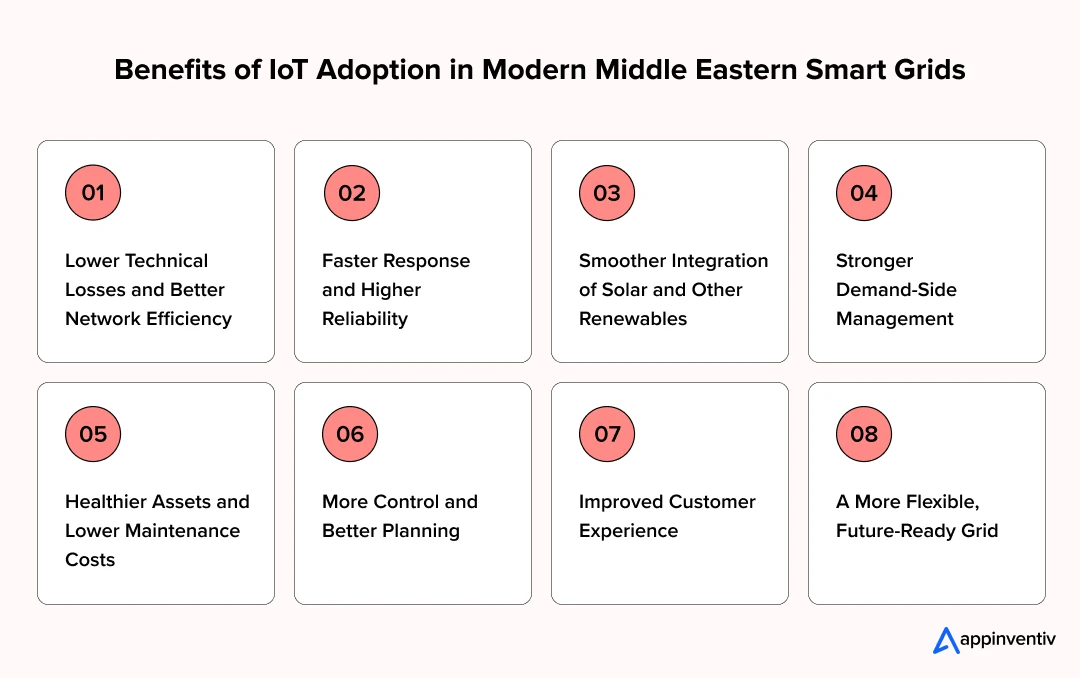
Lower Technical Losses and Better Network Efficiency
When every section of the grid is visible in real time, it becomes easier to spot leakages, overloads, and areas where the network is wasting energy. Operators can respond faster, and in many cases, prevent the issue altogether. This is one of the biggest benefits of IoT in Middle East energy sector operations, especially for utilities trying to manage fast-growing demand.
Faster Response and Higher Reliability
The moment an abnormal pattern appears, connected systems send alerts to the control room. Voltage dips, unexpected load spikes, and equipment stress become visible immediately. That kind of live insight helps reduce outage duration and improves overall reliability without needing major infrastructure upgrades.
Smoother Integration of Solar and Other Renewables
As the region adds more clean energy, the role of IoT in renewable energy management becomes even more important. IoT sensors help operators understand how much renewable power is coming into the grid at any moment and adjust the rest of the network accordingly. It keeps two-way flows stable and makes renewable growth easier to manage.
Stronger Demand-Side Management
Connected meters and building-level devices make demand response far more practical. Utilities can guide consumption during peak hours, shift non-essential loads, and plan for high-demand seasons with better accuracy.
Healthier Assets and Lower Maintenance Costs
IoT devices help operators understand how equipment is aging, which transformers are heating up faster than expected, and where load conditions are pushing assets too hard. Instead of waiting for failures, teams can schedule maintenance based on real operating conditions. It saves money and keeps the system running more smoothly.
More Control and Better Planning
With all data coming into one place, long-term planning becomes more grounded in reality. Load forecasts improve. Upgrade decisions become clearer. Operators know where to expand, where to reinforce, and where investments will have the biggest impact. Many smart energy systems Middle East programs rely on this data-driven approach to guide larger modernization plans.
Improved Customer Experience
When customers understand their own usage, they can manage it better. IoT-enabled energy efficiency solutions help households and businesses track real-time patterns, catch unusual activity, and reduce unnecessary consumption. This leads to fewer complaints, fewer billing disputes, and higher trust in the utility.
A More Flexible, Future-Ready Grid
All these improvements together help build a grid that can adapt to the region’s changing energy landscape. Whether it’s rapid city expansion, rising EV adoption, or large-scale solar growth, IoT-based smart energy management system deployments make it easier for utilities to respond without reworking the entire network.
How to Integrate IoT into Modern Smart Grids
Integrating IoT into a national grid isn’t a plug-and-play upgrade. It’s a staged transformation that touches field assets, communication layers, control centres, and enterprise systems. Utilities across the region are learning that the success of IoT-based smart grid deployments depends on how wisely each layer is connected, secured, and scaled. The aim is simple: build a grid where sensing, communication, and control work together without disrupting existing SCADA, AMI, or enterprise platforms.
Below is the practical integration path most utilities follow when moving toward a fully connected, IoT-driven smart grid.
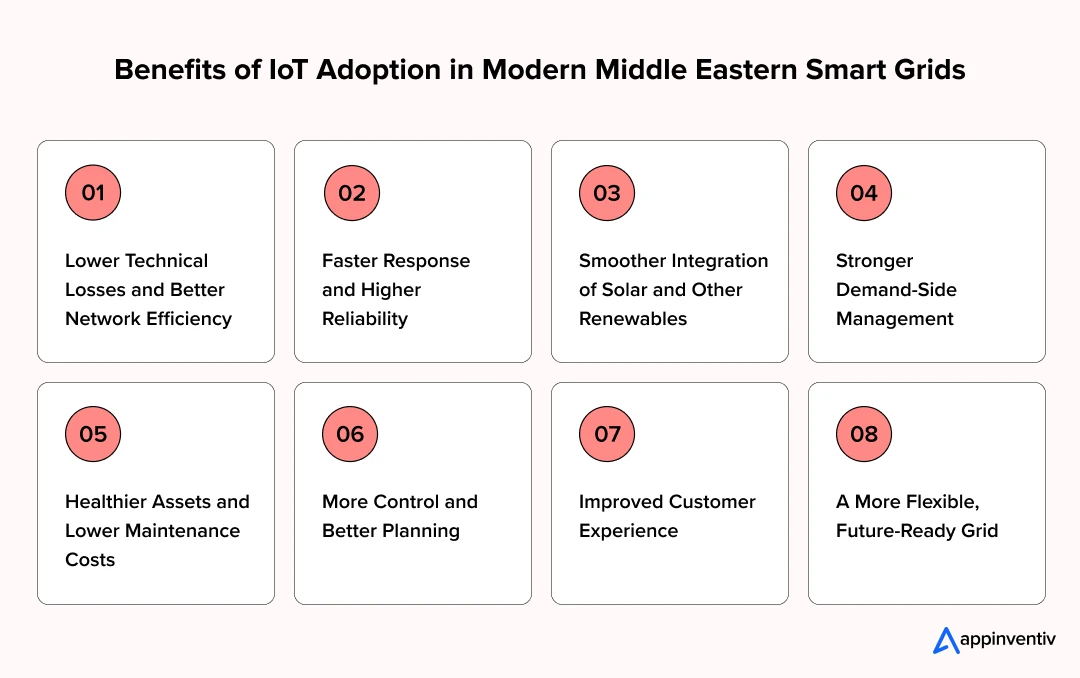
Build a Unified Data Foundation
Before adding devices, utilities need a clean data layer that brings meter data, feeder behaviour, renewable inputs, and asset conditions into one place.
This is where IoT energy management becomes operational – a unified view that lets teams analyse patterns, trigger actions, and improve planning. A strong data foundation also ensures Smart grid IoT applications stay consistent across large service territories.
Connect Field Devices Using Multi-Layer Networks
IoT smart grid integration depends on reliable connectivity. Most Middle Eastern utilities use a mix of RF mesh, NB-IoT, LTE-M, and fibre to cover dense urban zones and remote desert substations. This multi-network approach reduces blind spots and keeps data moving even during peak demand or tough weather conditions.
Add Edge Processing for Faster Local Decisions
Instead of sending every signal back to the control room, edge devices analyse and act in real time – isolating faults, optimising voltage, and balancing feeders locally. This keeps the grid steady even when the central system is busy or the network slows down for a moment.
Integrate IoT with Existing SCADA, AMI, and Enterprise Systems
The biggest challenge is merging new IoT devices with legacy operational systems. Utilities combine IoT platforms with SCADA, MDMS, EMS, and billing systems so the grid behaves like one coordinated network rather than a set of disconnected assets. This step ensures IoT-based smart energy management system deployments don’t create new data silos.
Secure Every Layer of the Connected Grid
More connected devices mean more entry points. Utilities add encryption, device identity, role-based access, and continuous monitoring to protect IoT in smart grids in Middle East environments. This ensures that every meter, sensor, and gateway joining the network remains trustworthy.
Enable Renewable and Distributed Resource Coordination
As solar and wind expand, the role of IoT in renewable energy management becomes essential.
Integrating field sensors, weather feeds, and inverter data helps utilities forecast output, stabilise variability, and manage two-way power flows. This makes renewable energy IoT solutions dependable at scale.
Challenges Slowing Down Smart Grid Adoption in the Middle East
Even with strong national programs and steady investments, utilities still run into practical roadblocks while shifting to connected grid systems. These hurdles don’t stop progress, but they do slow it down if not addressed early. The table below sums up the issues most teams face across IoT-based smart grid deployments, along with the impact and the most workable way forward.
| Challenge | Impact on Utilities | How to Resolve It |
|---|---|---|
| SCADA, AMI & OT–IT interoperability | Legacy SCADA (IEC 61850, DNP3), AMI–MDMS pipelines, EMS, DMS, and GIS platforms sit in separate silos. Data formats don’t align, vendor systems don’t naturally connect, and integrating IoT layers becomes slow and expensive. IT systems (Oracle Utilities, SAP IS-U) and OT systems rarely speak the same language. | Build an interoperability layer early. Use open standards, protocol converters, secure APIs, and middleware that lets IoT sit on top of SCADA/AMI without disrupting critical operations. Plan OT–IT convergence as a phased roadmap, not a single project. |
| Cybersecurity risks across IoT-enabled grid environments | Millions of IoT endpoints expand the attack surface. A weak device, unsecured firmware, or open IoT network can trigger false load spikes, voltage instability, or OT–IT exposure. Threats move faster than manual monitoring, especially across substations and distributed assets. | Adopt zero-trust rules, device identity, encryption, network segmentation, and continuous threat detection built for internal operations. Align architectures with NCA (Saudi), SAMA, and UAE security guidelines to safeguard IoT-powered energy management platforms and field devices. |
| Old systems mixed with new technology | Data gets stuck in silos, and smart grid IoT applications don’t work the way they should. Operators lose visibility across feeders, meters and substations. | Start with a phased integration plan. Connect high-value assets first and build a unified data model that can support future IoT-based smart grid integration. |
| Weak or inconsistent communication networks | IoT devices drop data or send it late. Real-time automation becomes unreliable, especially across remote areas. | Use a mix of NB-IoT, fiber and private RF networks. Most Smart grids Middle East projects now combine multiple communication layers to keep data consistent. |
| Shortage of skilled talent for IoT operations | Utilities struggle to maintain systems once they move beyond pilots. Projects slow down because teams are unsure how to manage new platforms. | Upskill in-house teams early and partner with experienced engineering firms for long-term support rather than one-time deployments. |
| Difficulty managing distributed solar and other renewables | Voltage swings, irregular generation and reverse power flows become harder to balance. | Deploy forecasting tools and sensors across renewable sites. This strengthens the role of IoT in renewable energy management and keeps the grid stable. |
| Unclear return on investment during early planning | Decision-makers hesitate to approve large rollouts because benefits aren’t always visible upfront. | Start with measurable use cases-loss reduction, outage restoration, and peak-load control. These help justify the next stage of renewable energy IoT solutions. |
| Extreme environmental and regional conditions affecting IoT performance | Sandstorms reduce solar output, block sensors, and disrupt wireless connectivity. High heat stresses transformers, meters, and edge devices. Seasonal load spikes – especially during Hajj and peak summer cooling – strain forecasting models. Remote desert substations create communication blind spots that slow deployments. | Use ruggedised sensors, heat-rated devices, protected enclosures, and multi-layer communication networks. Combine IoT smart grid integration with local edge processing to stabilise performance during harsh conditions. Tune forecasting algorithms to reflect regional peak-load behaviour for more predictable operations. |
| Complex vendor landscape and incompatible platforms | Each system comes with its own standards. Utilities spend more time aligning vendors than improving the grid. | Partner with an IoT app development company that understands utility-grade interoperability and can design open platforms that sit cleanly on top of Oracle Utilities, SAP IS-U, GE Digital, and EcoStruxure without breaking your existing workflows. |
The Future of Smart Grids with IoT in the Middle East
The region is entering a stage where grid modernization is no longer about adding smart meters or automating a few substations. The next phase is about building a system that can learn, predict, and adapt on its own. This is the direction most national utilities are moving toward, and it is shaping the future of smart grids with IoT across the Middle East in a very real way. What comes next is a grid that behaves less like static infrastructure and more like a living, responsive network.
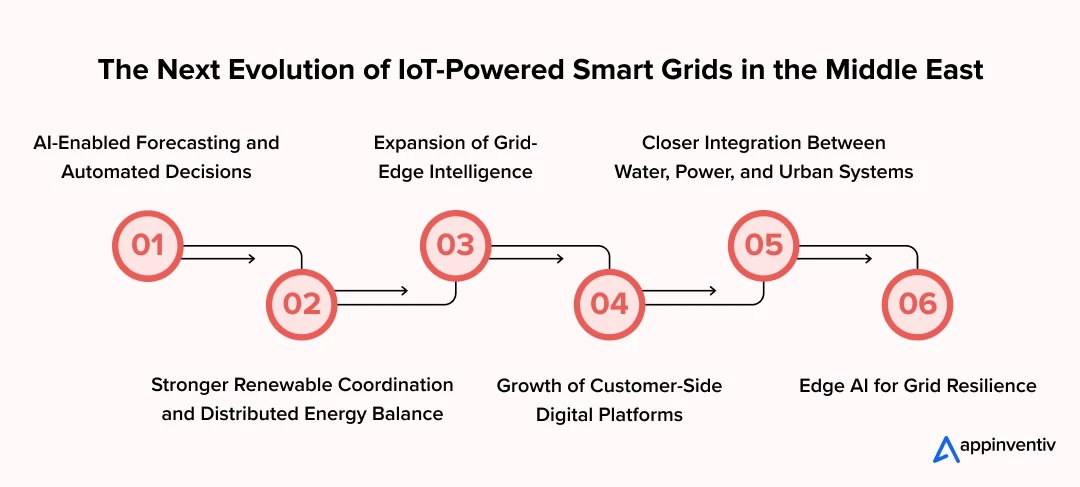
AI-Enabled Forecasting and Automated Decisions
The amount of real-time data coming from sensors, meters, field devices, and control units is growing fast. AI will sit on top of these data streams and make everyday grid operations more predictable. Instead of reacting to faults or load spikes, utilities will rely on models that warn them earlier, adjust voltage for them, and rebalance feeders before things escalate. This is where IoT in smart grids in Middle East environments moves from simple visibility to automated control.
Stronger Renewable Coordination and Distributed Energy Balance
Solar and wind installations will grow even faster over the next decade. With more variable energy feeding into the grid, operators will depend heavily on IoT smart grid integration to keep two-way flows steady. Field sensors, weather inputs, and forecasting engines will guide how much renewable power enters the network and when supporting assets need to take over.
Expansion of Grid-Edge Intelligence
More decisions will be made closer to where energy is consumed or generated. Edge devices will isolate faults within seconds, correct voltage locally, and manage load shifts without waiting for central instructions. This layer of intelligence will support Smart grid initiatives that cover large cities, industrial zones, and remote areas with very different operating conditions.
Growth of Customer-Side Digital Platforms
Energy users – from homes to large buildings – will expect more tools to track and manage their consumption. IoT-based energy efficiency app solutions will evolve into complete engagement platforms, giving customers real-time insights, alerts, and control over how and when they use energy. This shift pushes utilities to think beyond the network and design digital experiences that complement the physical grid.
Closer Integration Between Water, Power, and Urban Systems
As cities expand their digital infrastructure, utilities will see more overlap between electricity, water networks, mobility systems, and public services. IoT-powered smart grid deployments will become part of a broader urban ecosystem instead of staying limited to power distribution. Unified data platforms will help utilities plan more holistically, especially in fast-growing metropolitan areas.
Edge AI for Grid Resilience
The future is bound to be evolved by pushing intelligence directly to the grid edge. Edge AI allows devices to analyse data the moment it is created, instead of waiting for instructions from the control centre. This shift strengthens day-to-day reliability, especially in regions where extreme heat, fast-changing load patterns, and distributed resources demand quicker decisions than central systems can provide.
With edge-based models, utilities can predict feeder faults before they escalate, adjust voltage locally, and maintain service continuity even when parts of the network are temporarily segmented. Edge AI also improves power quality analysis, supports AI-driven coordination of solar and other DER assets, and makes IoT smart grid integration more stable during high-demand periods. For Middle Eastern utilities preparing for rapid growth in renewables and city-wide electrification, this local intelligence becomes a core enabler of future-ready operations.
All these changes lead toward a grid that can adjust itself in real time – absorbing renewable spikes, managing demand shifts, improving resilience, and reducing losses without waiting for human intervention. This is the direction the region is heading toward, and it is already shaping how utilities prioritize their investments.
How Appinventiv Helps Middle Eastern Utilities Build IoT-Driven Smart Grids
Appinventiv supports utilities across the region by helping them modernize legacy grids into connected, real-time systems that can scale. We bring engineering depth in integrating meters, substations, sensors, and distributed assets into one unified ecosystem, making IoT in smart grids in Middle East environments more reliable, predictable, and easier to operate.
As a mobile application development firm in Dubai, our teams build the digital foundations utilities depend on – secure communication networks, data platforms, and IoT energy management layers that turn raw device data into actionable intelligence. From renewable energy IoT solutions that stabilize solar output to customer-facing applications that improve transparency, we design systems that reduce losses, improve planning accuracy, and strengthen day-to-day operations.
Every deployment introduces new security, compliance, and integration demands. We design architectures that meet regional data rules, protect millions of endpoints, and work seamlessly with existing SCADA, AMI, and enterprise systems.
Whether it’s a national smart meter rollout or a full IoT-driven modernization roadmap, we help utilities move from isolated pilots to a stable, scalable smart grid future.
As an energy software development company, we work closely with utility teams to plan, build, and refine systems that stay dependable at scale and adapt as the grid grows. Get in touch with our experts to plan the next phase of your IoT-driven grid transformation.
FAQs
Q. How much does it cost to integrate IoT with a smart grid in the Middle East?
A. There isn’t one fixed number because every utility starts with a different mix of old systems, coverage gaps, and priorities. For many teams, the first step – adding smart meters, basic sensors, and the communication layer to move that data – usually sits somewhere between AED 1.2 million and AED 3.5 million. It’s the entry point.
Once you move past that and bring in edge devices, substation upgrades, renewable coordination, and the heavier IoT smart grid integration work, the budget climbs. Most mid-size programs land roughly in the AED 12 million to AED 45 million bracket.
Full national rollouts are a different story. When a project includes advanced analytics, asset-health monitoring, SCADA and AMI integration, and the security setups that keep everything stable, it isn’t unusual for the total to pass AED 60 million. Those numbers grow mainly because of scale, not the technology itself.
Q. How IoT is transforming smart grids in the Middle East?
A. IoT in smart grids in Middle East is reshaping how utilities manage and operate their networks by enabling real-time monitoring, automated fault detection, and predictive maintenance. It gives operators deeper visibility into consumption patterns, reduces outages, and improves overall grid efficiency. IoT systems also make it easier to integrate renewable energy, balance load, and maintain stability across rapidly expanding power infrastructures in the region.
Q. How is IoT revolutionizing energy systems in the Middle East?
A. IoT technologies are changing Middle Eastern energy systems through full monitoring, automated control, and data analytics. Utilities can track asset performance in real time, detect faults before they escalate, and automate responses that keep supply stable even during peak demand. By connecting meters, substations, and distributed renewable assets into a single digital layer, IoT helps operators reduce losses, improve planning accuracy, and move toward cleaner, more reliable energy delivery across the region.
Q. Can IoT help in renewable energy integration?
A. Yes, IoT significantly enhances renewable energy integration by providing real-time monitoring of solar and wind generation, predictive forecasting based on weather data, and automated grid balancing. It allows operators to anticipate fluctuations, stabilize output, and coordinate distributed assets more efficiently. This leads to smoother incorporation of renewables into the grid, better load management, and a more reliable transition toward cleaner energy.
Q. How to create an IoT smart grid mobile app?
A. Creating an IoT smart grid mobile app requires integrating real-time data from smart meters and sensors, developing user-friendly interfaces for energy monitoring, implementing secure communication protocols, and adding features like consumption analytics and demand response participation. Partner with experienced mobile application development firms that understand energy sector requirements, IoT protocols, and regulatory compliance to build comprehensive solutions that engage users effectively.
Q. How to develop an energy management app with IoT integration?
A. Developing an IoT-integrated energy management app involves designing APIs for smart meter data collection, implementing real-time analytics engines, creating intuitive dashboards for consumption monitoring, and integrating with building management systems. Work with energy software development companies that have expertise in IoT protocols, cloud platforms, and energy industry standards to ensure scalable, secure, and user-friendly applications that maximize energy efficiency benefits.
Q. What is smart grid and how is it enabled by IoT?
A. A smart grid is an intelligent electricity network that uses two-way digital communication to watch and manage energy flow from generation to consumption. IoT allows smart grids through millions of connected sensors, smart meters, and automated control systems that give real-time data collection and analysis. This connectivity lets utilities improve operations, integrate renewable energy, cut outages, and engage customers in energy management programs well.


- In just 2 mins you will get a response
- Your idea is 100% protected by our Non Disclosure Agreement.
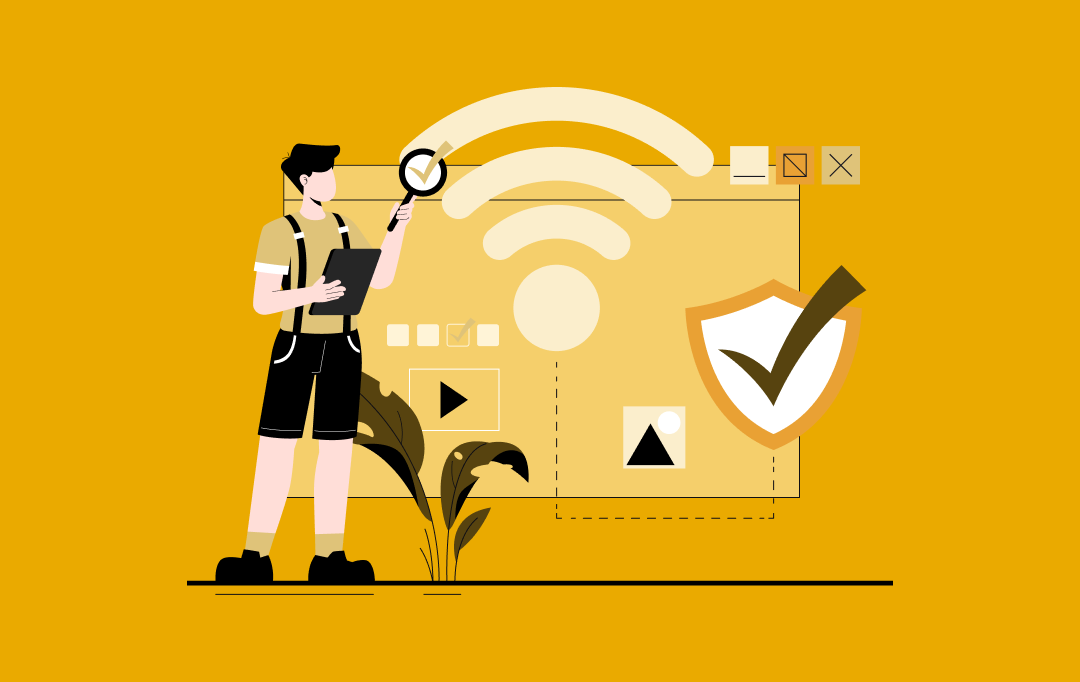
Key takeaways: IoT in insurance moves decisions from static risk estimates to real-time insights drawn from vehicles, homes, and personal devices. Connected sensors help insurers lower fraud, detect issues early, and settle claims faster with clear evidence instead of guesswork. The biggest IoT use cases today include telematics for driving habits, smart home leak and…

How Edge Computing Enhances IoT App Performance
Key takeaways: Edge computing kills latency by processing data on the spot, paving the way for real-time magic in things like autonomous cars and factory robots. By analyzing data at the source, you can slash your bandwidth and cloud storage bills. It's just a more efficient way to run your IoT ecosystem. Your IoT setup…

Developing an IoT-Based Smart Water Management System - Key Benefits, Applications and Process
Think about this: by 2050, the global water demand is set to shoot up by over 50%. That's a lot of water, and frankly, the world needs to be smarter about its use. As a business leader, the strategies you implement today will greatly impact your company's and environment’s future, particularly in terms of sustainability…

